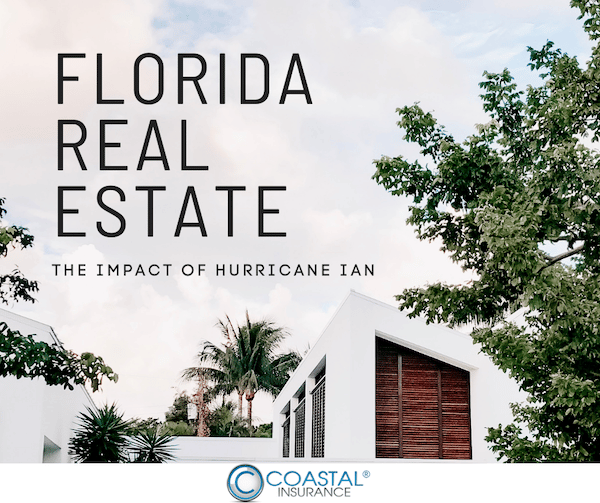Insurance for luxury condos, high-value co-ops, and multimillion-dollar penthouses differs from coverage for single-family homes. When you own a single-family home, you need to insure the entire structure — and perhaps some unattached buildings as well. In contrast, when you own a condo or co-op, you’re usually only insuring from the walls inward, although in some cases the condo association’s master policy may provide some basic protection for your interior. To properly insure your condo or co-op and navigate the details, we’ll have to dig a bit deeper.
When insuring a high-end condominium, cooperative, or penthouse, much of your coverage dollar goes toward protecting your personal belongings and improvements you’ve made to your unit. The insurance industry refers to these as “contents” coverage and “additions and/or betterments” coverage, respectively. Because condo insurance rates focus the coverage on contents (your “stuff”) and betterments (upgrades to your unit), the cost per $1,000 of coverage may vary slightly from a single-family home, where much of the coverage focuses on the cost of rebuilding the structure itself.

First, let’s discuss the caveats. Insurance rates vary based on a number of factors, some of which relate to the property itself and others that relate to the applicant or how the property is used, and the coverage options you choose.
In most states, credit scores can play a meaningful role in determining rates, although most insurers roll credit scores into a basket of proprietary rating factors collectively known as an “insurance score”. Other factors such as claim history, deductible choice (and even crime rates in the area) can also affect rates. Of course, catastrophic weather risks (mainly hurricane) or geographical risks (wildfire and earthquake) play a role as well. All this means is that your insurance rates may differ from those of your neighbor, even if you live in the same building, have the same floor plan, and insure a similar value for contents and additions/betterments.
Cost to Insure $1M, $3M, $5M & $10M Condo—Real Quotes
Let’s look at two real examples quoted recently in our office. You’ll be able to see the vast difference in premium based on several factors. In the first case, we’ll consider a condo in a fire-resistive building located in New York City. The insured value for contents and additions/betterments was requested at $1 million. In this case, the unit owner had excellent credit, no prior claims, and had taken advantage of several multi-line discounts. The policy cost for the homeowner in this example came in at $1,650 for the year or $1.65 per $1,000 of coverage with a $25,000 deductible.
*Keep in mind, this client chose a high deductible and maximized most of the credits available. Many insurers offer additional discounts for purchasing more than one type of policy through the same insurer. For example, one high-value insurer we work with offers an insurance discount of up to $500 (off the condo policy) as an auto policy companion credit and up to $250 (off the condo policy) as a companion credit for buying a personal excess liability policy with limits of $5,000,000. A credit on the personal auto policy was applied separately and exceeded $750.
As a second example, we’ll consider a high-risk penthouse with an insured value of $10 million. This unit was in close proximity to a wildfire zone, in the surrounding area of Los Angeles, California. The owner had a few “dings” against him.
- Had several claims (one over $1M)
- Was located in close proximity to a wildfire zone
- Is not considered a “Primary Residence”
- Is being non-renewed from prior insurance company
- Unit is owned by a Limited Liability Corp. (LLC)
- The LLC leased the unit to others “for-profit”
Because the risk is much higher, the rate per $1,000 of coverage is also higher. The corporation paid $8.20 per $1,000 of coverage and requested a $10 million policy. The cost was $82,000 for the year. Ouch!
To give a broad example, luxury condo rates will range from $1.60 per $1,000 up to $11.40 per $1,000 of insured value. Lower risk generally leads to lower premiums when considering cost per $1,000 of coverage. Not to worry though, in most cases rates for luxury condos, cooperatives, or penthouses are very reasonable—generally falling in between the two prior extremes.
To get a better feel for ‘real-life’ numbers, we can ‘ballpark’ the cost per million of coverage for luxury units that are considered a low-medium risk. Generally, the rates will fall between $2,000-$3,000 per $1,000,000 of yearly coverage.
We did the math for you. It’s expressed in insurance limits, not market value.
- $1 million condo or co-op would run you between $2,000-$3,000/yr.
- $2 million condo or co-op rate would double the quote to $4,000-$6,000/yr.
- $3 million condo or penthouse would triple the rate to $6,000-$9,000/yr.
- $5 million high-end, penthouse would cost $10,000-$15,000 yr.
- $10 million high value, penthouse would quote approximately $20,000-$30,000/yr.
- $20 million ultra-exclusive penthouse would quote in the range of $35,000-$60,000/yr.
Again, keep in mind these values are based on the amount of personal property + additions or betterments at the unit, not the market value. In many cases, the market value will significantly exceed the cost of your personal property or the amount you (or the prior owner) spent to upgrade the interior of your unit.
However, there may be factors that prevent the math from being quite that simple. Instead, consider this as a way to estimate your probable insurance costs and be aware that insured value is just one element that determines the premium. To properly insure your unit, you should work with an experienced state-licensed insurance advisor to identify your true needs.
Factors that affect insurance rates for luxury multimillion-dollar condos
Insurance is the transfer of risk, but rates also reflect the risks inherent in your location or from insured value. It doesn’t cost $10 million in premiums to insure a $10 million home. Instead, the risk of a $10 million loss is shared among a pool of insured condo owners, dropping the annual premium into the thousands for an individual condo owner. However, insurance rates reflect the risk of your location as well as other rating factors. Here are a few:
Insured value
Among the largest factors that determine the cost of your coverage, however, are the insured value of the improvements you’ve made, and the insured value of your belongings. If all other things are equal, a $10 million policy costs more annually than a $5 million policy, but the difference in cost may not follow a simple math formula.
Surcharges and credits
Surcharges increase the premiums for your unit. Some examples of surcharges can include a seasonal surcharge for vacation or secondary homes, a surcharge for condos rented to others, or a vacancy surcharge for co-ops left unoccupied.
Credits can reduce the cost of your coverage. Some examples of credits include burglar or fire alarm credits, gated community credits, sprinkler system credits, 24hr doorman discount, bundled policy credits, or water leak detection system credits.
The combination of all these factors makes it impossible to quote an exact cost for insurance without accounting for all the individual factors. The insurance rates for your luxury condo may differ from the examples given earlier or even from your neighbors across the hall.
Take a look at an actual discount/surcharge chart from one of our high-net-worth insurers that are aggressively writing insurance for luxury condos & co-ops in NYC, Chicago, LA, Boston & Miami.
Weather and location-based risks
A luxury condo in Miami faces a higher risk for wind damage, so condo owners in Miami can get a wind mitigation inspection to verify the home’s wind-resistant features and earn a lower insurance rate. With one insurer, the savings for a wind mitigation credit can be up to 31% in coastal areas. By contrast, wildfires can be a bigger concern for condos in California, adding to the cost of insurance for homes near wildfire zones. However, living in a fire-resistant building may earn a discount in some areas. Specific risks based on geography can affect policy costs, but there may be ways to offset some of those costs.
How your deductible affects coverage costs
The amount you choose as your deductible will greatly impact your rates. The discounts for raising your deductible vary by insurer, but here are some examples of how the deductible can affect your premiums with one high-value insurer we work with closely. For most risks, a $10,000 deductible can save nearly 30% on applicable coverages. The deductible is the part of the claim you pay and by choosing a higher deductible, you can earn lower rates. However, as with many things, there’s a point of diminishing returns. Choosing a $50,000 deductible earns a discount of about 40% and may not justify taking on the extra out-of-pocket risk.
For areas or policies that require a separate hurricane deductible, the amount you choose for your hurricane deductible affects the cost of your policy. As an example, beachfront homes can save 13% by choosing a $25,000 deductible instead of the standard $10,000 deductible for covered damage caused by hurricanes.
Your insurance history and its effect on condo insurance rates
As mentioned earlier, in most areas of the country, credit scores can play a role as well, but claims history can have an effect on rates universally. For example, a prior loss for a non-water claim can add 5% to your coverage costs. Prior water-damage claims can add 10% to the cost of a policy. Fortunately, a spotty claims history won’t last forever. Most insurers look at a 3-to-5-year range when considering claims for rating purposes and eligibility.
Age of building and system upgrades
Newer construction often leads to lower rates as well. For example, you may see discounts up to 29% for buildings built within the last 10 years. Plumbing, heating, and electrical system upgrades can also save on premiums. Discounts of up to 15% may be available for recently renovated systems.
What’s covered by a high-value condo policy?
As mentioned earlier, insurance coverage for a condo is split between the unit owner and the condo association. In many cases, the condo association’s master policy insures the building itself as well as common areas. In cases where the master policy also covers the condo’s interior, you’ll find limitations to coverage that can create troubling gaps. The primary concern is that a master policy only insures for rebuilding with “builders’ grade” materials. If you’ve invested $5 or $10 million in renovations, you’ll find the standard coverage provided with a master policy is much less than the value of your improvements.
A well-structured high-value condo policy can protect your investment by insuring for the true cost of rebuilding, complete with adjustments for special materials, or taking unique details into account. You may have installed luxury floors, staircases, molding, custom kitchens, and baths, or other extensive renovations. With a high-value condo policy, you should insure for the full value of these customizations.
Your policy also covers your personal belongings, which can include valuables. For example, you may have high-end furnishings and decor, as well as jewelry, in addition to common household items such as appliances, clothing, and more. Your condo policy can protect these items against common risks, whereas a master policy owned by the condo association doesn’t extend coverage to your personal property.
A high-value condo policy covers both your condo and its contents for common risks such as fire, lightning, wind and hail, and many types of accidental water damage. The contents coverage on your policy can protect your belongings against additional risks, such as theft. For items your policy insures specifically, called scheduled items (an original Bob Ross painting?), your coverage may also cover additional risks and often allows for claims without a deductible.
The right insurance for Condo or Co-op’s worth $1M+
For affluent households, insurance needs are usually better addressed as a whole rather than as a patchwork that uses separate policies, which often leave gaps. As independent agents, the experienced team at Coastal Insurance can help you craft a custom coverage solution that considers not just your condo or co-op, but also other exposures like personal liability, cyber liability, and auto coverage. By using this strategy, you’ll often qualify for extra discounts. More importantly, by considering how each policy relates to the next, you can better protect your assets through risk management and comprehensive coverage that seals potential gaps you might find in standalone policies.
Coastal Insurance has “in-house” access to the most exclusive high-net-worth insurers in the nation. PURE High Net Worth, Chubb’s Masterpiece Program, AIG’s Private Client Group, Cincinnati’s Executive Capstone Program, NatGen Premier, and many more.
Let the advisors at Coastal Insurance help you find the right coverage for your high end, luxury condo, co-op or penthouse. To get started give us a call or request analysis for a personalized quote.
At Coastal Insurance, protecting your family’s assets is our top priority!


![IBA Top Retail Brokers 2024 Medal[88] IBA's Top Retail Broker 2023](https://coastalinsurancesolution.com/wp-content/uploads/2024/07/IBA-Top-Retail-Brokers-2024-Medal88.png)



